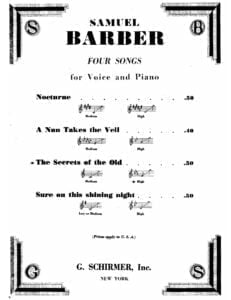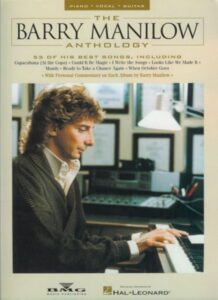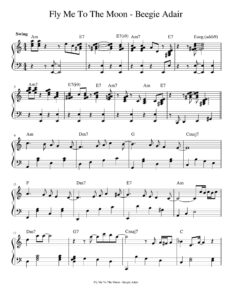Charlie Parker: the 100 most inspiring musicians of all time
American alto saxophonist, composer, and bandleader, Charlie Parker (b. Aug. 29, 1920, Kansas City, Kan., U.S.—d. March 12, 1955, New York, N.Y.) was the principal stimulus of the modern jazz idiom known as bebop, and—together with Louis Armstrong and Ornette Coleman—was one of the great revolutionary geniuses in jazz.

Charlie Parker grew up in Kansas City, Missouri, during the great years of Kansas City jazz, and began playing alto saxophone when he was 13. At 14, he quit school and began performing with youth bands, and at 16 he was married— the first of his four marriages. The most significant of his early stylistic influences were tenor saxophone innovator Lester Young and the advanced swing-era alto saxophonist Buster Smith, in whose band Parker played in 1937.
Parker recorded his first solos as a member of Jay McShann’s band, with whom he toured the eastern United States in 1940–42. It was at this time that his childhood nickname “Yardbird” was shortened to “Bird.” His growing friendship with trumpeter Dizzy Gillespie led Parker to develop his new music in avant-garde jam sessions in New York’s Harlem. Bebop grew out of these experiments by Parker, Gillespie, and their adventurous colleagues; the music featured chromatic harmonies and, influenced especially by Parker, small note values and seemingly impulsive rhythms. Parker and Gillespie played in Earl Hines’s swing oriented band and Billy Eckstine’s more modern band.
In 1944, they formed their own small ensemble, the first working bebop group. The next year Parker made a series of classic recordings with Red Norvo, with Gillespie’s quintet (“Salt Peanuts” and “Shaw Nuff ”), and for his own first solo recording session (“Billie’s Bounce,” “Now’s the Time,” and “Koko”). The new music he was espousing aroused controversy, but also attracted a devoted audience. By this time Parker had been addicted to drugs for several years. While working in Los Angeles with Gillespie’s group and others, Parker collapsed in the summer of 1946, suffering from heroin and alcohol addiction, and was confined to a state mental hospital.
Following his release after six months, Parker formed his own quintet, which included trumpeter Miles Davis and drummer Max Roach. He performed regularly in New York City and on tours to major U.S. cities and abroad, played in a Gillespie concert at Carnegie Hall (1947), recorded with Machito’s Afro-Cuban band (1949–50), and toured with the popular Jazz at the Philharmonic troupe (1949). A Broadway nightclub, Birdland, was named after him, and he performed there on opening night in late 1949; Birdland became the most famous of 1950s jazz clubs.
The recordings Parker made for the Savoy and Dial labels in 1945–48 (including the “Koko” session, “Relaxin’ at Camarillo,” “Night in Tunisia,” “Embraceable You,” “Donna Lee,” “Ornithology,” and “Parker’s Mood”) document his greatest period. He had become the model for a generation of young saxophonists. His alto tone was hard and ideally expressive, with a crying edge to his highest tones and little vibrato. One of his most influential innovations was the establishment of eighth notes as the basic units of his phrases. The phrases themselves he broke into irregular lengths and shapes and applied asymmetrical accenting.
Parker’s most popular records, recorded in 1949–50, featured popular song themes and brief improvisations accompanied by a string orchestra. These recordings came at the end of a period of years when his narcotics and alcohol addictions had a less disruptive effect on his creative life. By the early 1950s, however, he had again begun to suffer from the cumulative effects of his excesses; while hospitalized for treatment of an ulcer, he was informed that he would die if he resumed drinking. He was banned from
playing in New York City nightclubs for 15 months. He missed engagements and failed to pay his accompanying musicians, and his unreliability led his booking agency to stop scheduling performances for him. Even Birdland, where he had played regularly, eventually fired him. His two year-old daughter died of pneumonia; his fourth marriage fell apart. He twice attempted suicide and again spent time in a mental hospital.
If Parker’s life was chaotic in the 1950s, he nonetheless retained his creative edge. From roughly 1950 he abandoned his quintet to perform with a succession of usually small, ad hoc jazz groups; on occasion he performed with Latin American bands, big jazz bands (including Stan Kenton’s and Woody Herman’s), or string ensembles. Recording sessions with several quartets and quintets produced such pieces as “Confirmation,” “Chi-Chi,” and “Bloomdido,” easily the equals of his best 1940s sessions. Outstanding performances that were recorded at concerts and in nightclubs also attest to his vigorous creativity during this difficult period. He wanted to study with classical composer Edgard Varèse, but, before the two could collaborate, Parker’s battle with ulcers and cirrhosis of the liver got the better of him.
While visiting his friend Baroness Nica de Koenigswarter, he was persuaded to remain at her home because of his illness; there, a week after his last engagement, he died of a heart attack. The impact of Parker’s tone and technique has already been discussed; his concepts of harmony and melody were equally influential. Rejecting the diatonic scales common to earlier jazz, Parker improvised melodies and composed themes using chromatic scales. Often he played phrases that implied added harmonies or created passages that were only distantly related to his songs’ harmonic foundations (chord changes). Yet for all the tumultuous feelings in his solos, he created flowing melodic lines. At slow tempos as well as fast, his were intense improvisations that communicated complex, often subtle emotions.
The harmonies and inflections of the blues, which he played with passion and imagination, reverberated throughout his improvisations. Altogether, Parker’s lyric art was a virtuoso music resulting from a coordination of nerve, muscle, and intellect that pressed human agility and creativity to their limits.
Jazz sheet music and transcriptions download.
Charlie Parker – The Best of Charlie Parker volume 1
Track List:
1. Cool Blues 00:00 2. No problem 3:34 3. Satan in Hight Heels 12:26 4. What’s Right for you 15:52 5. Montage 19:03 6. Shawnuff 21:15 7. You and The Night and The Music 25:42 8. Cheryl 29:02 9. Lost and Lonely 35:14 10. Sidewinder 38:51 11. Abstract Art 41:12 12. Bongo Bop 44:05 13. Easy Side Drive 48:56 14. Jazz Vendor 51:46
15. Coffee Coffee 56:37 16. Over the rainbow 1:00:06 17. Subway Inn 1:02:25 18. The Hymn 1:06:27 19. All the things you are 1:12:04 20. Communion 1:15:25 21. Lake in the woods 1:21:31 22. The Feeling of Love 1:25:01 23. Bongo Beep 1:32:14 24. From Mundy On 1:36:55 25. Pittfall 1:40:15 26. Impulse 1:43:50 27. Long Knife 1:49:16 28. Melancholy Madeline 1:51:35 29. Stop and Listen 1:54:18 30. Blues For A Stripper 1:59:05 31. Born Again 2:02:30 32. Gabriel 2:08:14
Browse in the Library:
| Artist or Composer / Score name | Cover | List of Contents |
|---|---|---|
| Barber – Agnus Dei Op. 11 (full score transcribed for mixed Chorus with Organ or Piano Accompaniment) |
 |
|
| Barber – Samuel Barber The Composer And His Music (1992) by Barbara B. Heyman (Biography) |
 |
|
| Barber Violin Concerto (Violin and Piano sheet music) |
 |
|
| Barber Violin Concerto (Violin part sheet music) |
 |
|
| Barber_Violin_Concerto.mscz.mscz | ||
| Barber, Samuel Cello Concerto (Cello Part) |
 |
|
| Barber, Samuel Sonata For Piano, Op.26 |
 |
|
| Barber, Samuel – Sure On This Shining Night for Piano and SATB |
 |
|
| Barber, Samuel – Adagio for Strings Op. 11 Agnus Dei (solo piano arr.) |
 |
|
| Barber, Samuel – Four Songs – Nocturne |
 |
|
| Barber, Samuel – Four Songs – A Nun takes the Veil |
 |
|
| Barber, Samuel – Four Songs The Secrets of the Old |
 |
|
| Barber, Samuel – Summer Music |
 |
|
| Barber, Samuel Adagio for Strings full score | Samuel Barber-Adagio for Strings full score | |
| Barber, Samuel Adagio For Strings Samuel Barber (Musescore File).mscz | ||
| Barber, Samuel Agnus Dei Adagio for strings op. 11 for mixed chorus |
 |
|
| Barber, Samuel Nocturne Op. 33 |
 |
|
| Barber, Samuel Op 26 Piano Sonata |
 |
|
| Barbra Streisand The way we were (piano) | Barbra Streisand The way we were piano | |
| Barbra Streisand – Not While Im Around |
 |
|
| Barbra Streisand – Evergreen | ||
| Barbra Streisand – Send In The Clowns | ||
| Barbra Streisand – The Broadway album (Piano and voice) |
 |
Streisand, Barbra – The Broadway album (Piano and voice) |
| Barbra Streisand – The Way We Were | ||
| Barbra Streisand Collection |
 |
Book Barbra Streisand Collection |
| Barbra Streisand Evergreen | Barbra Streisand Evergreen | |
| Barbra Streisand Guilty – songbook |
 |
Barbra Streisand Guilty – songbook |
| Barbra Streisand Memories Songbook |
 |
Barbra Streisand Memories Songbook |
| Barbra Streisand My Name Is Barbra (Barbra Streisand) (Book) |
 |
|
| Barbra Streisand Somewhere From West Side Story | Barbra Streisand Somewhere From West Side Story | |
| Barcarolle (Musescore File).mscz | ||
| Barney Kessel – The Jazz Guitar Artistry Of Barney Kessel (14 original Guitar Solos) |
 |
Barney Kessel – The Jazz Guitar Artistry Of Barney Kessel (14 original Guitar Solos) |
| Barney Kessel – The Jazz Guitar Artistry Of Barney Kessel (Vol. 2 original Guitar Solos) |
 |
Barney Kessel – The Jazz Guitar Artistry Of Barney Kessel (Vol. 2 original Guitar Solos) |
| Barney Kessel Danny Boy Guitar with Tablature |
 |
|
| Barney Kessel Minor Mode |
 |
|
| Baroque Expressions Martha Mier from Bravo Book One (Piano Solos).mscz | ||
| Baroque Guitar Sheet Music arr. by Frederick Noad Guitar Anthology,The Classical Guitar |
 |
Baroque Guitar Sheet Music arr. by Frederick Noad Guitar Anthology,The Classical Guitar |
| Baroque Keyboard Anthology Book 1 24 Works For Piano Or Keyboard by Robin Bigwood |
 |
Baroque Keyboard Anthology Book 1 24 Works For Piano Or Keyboard by Robin Bigwood |
| Barrelhouse And Boogie Piano by Eric Kriss |
 |
Barrelhouse And Boogie Piano by Eric Kriss |
| Barry Hanks – Rhythm Changes Solo Transcription | Barry Hanks – Rhythm Changes Solo Transcription | |
| Barry Harris Approach to improvised lines & harmony |
 |
|
| Barry Harris Basics Summary Of Class Exploring the Diminished |
 |
|
| Barry Harris Donna Lee sheet music transcription |
 |
|
| Barry Harris Harmonic Method For Guitar, The |
 |
|
| Barry Harris Jazz Workshop Part 1 |
 |
|
| Barry Harris Jazz Workshop Part 2 |
 |
|
| Barry Harris Method Método IMPROVISACIÓN (Español-Spanish) |
 |
|
| Barry Harris On Green Dolphin Street sheet music transcription |
 |
|
| Barry Harris’ solo on “Woody n’You | Barry Harris Woody n’You | |
| Barry Manilow – Can’t Smile Without You |
 |
|
| Barry Manilow – Copacabana (At the Copa) |
 |
|
| Barry Manilow – Copacabana | ||
| Barry Manilow – Mandy | ||
| Barry Manilow – Sheet Music Anthology |
 |
Barry Manilow – Sheet Music Anthology |
| BARRY WHITE – (THE COLLECTION) |
 (88) (PF)-212x300.jpg) |
BARRY WHITE – (THE COLLECTION) |
| Barry White – Loves Theme | ||
| Bart Howard – Fly Me To The Moon Guitar and TABs (Jazz Standard) | Bart Howard – Fly Me To The Moon Guitar and TABs (Jazz Standard) | |
| Bartok – For Children, Sz. 42 Complete 1 to 43 Bela Bartok |
 |
|
| Bartok – Improvisations op 20 Bela Bartok |
 |
|
| Bartok – Mikrokosmos (Books 1 to 6) Bela Bartok | Bartok – Mikrokosmos (1-6) sheet music |
 |
| Bartok – Mikrokosmos Vol. 2 Bela Bartok |
 |
|
| Bartok – Mikrokosmos Vol. 4 Bela Bartok |
 |
 |
| Bartok – Mikrokosmos Vol.1 Bela Bartok |
 |
|
| Bartok – Sonate For Piano Solo Bela Bartok |
 |
|
| Bartok 6 Danses populaires roumaines Bela Bartok | Bartok.-.6.Danses.populaires.roumaines | |
| Bartok For Children Book 1 Based On Hungarian Folk Tunes Piano Solo |
 |
|
| Bartok For Children Book 2 after Slovakian Folk Tunes Piano Solo | Bartok For Children Book 2 after Slovakian Folk Tunes Piano Solo | |
| Bartok Improvisations op. 20 Bela Bartok |
 |
|
| Bartok Piano Sonata Bela Bartok |
 |
|
| Bartok Ten Easy Pieces |
 |
|
| Basic Piano Library Piano Recital Book Level 1B |
 |
Basic Piano Library Piano Recital Book Level 1B |
| Bass Guitar For Dummies (eBook) |
 |
|
| Bass Standards (Classic Jazz Masters) Note for note transcriptions of jazz Bass classic performances |
 |
Bass Standards (Classic Jazz Masters) Note for note transcriptions of jazz Bass classic performances |
| Bastien – Piano Basics Level 1 Piano |
 |
|
| Bastien Piano Basics – Piano for the Young Beginner Primer A |
 |
|
| Bastien Piano Basics – Piano for the Young Beginner Primer B |
 |
|
| Bastien Piano Basics – Theory Level 2 | Bastien Piano Basics – Theory Level 2 | |
| Bastien Piano Basics Level 3 |
 |
|
| Bastien Piano Basics Technic Primer Level for children |
 |
|
| Batman – Flowers Of The Past – Danny Elfman | Batman-Flowers-Of-The-Past-Danny-Elfman 1st page | |
| Batman – Sonata In Darkness Michael Giacchino | Batman – Sonata In Darkness Michael Giacchino | |
| Batman Begins – Hans Zimmer James Newton Howard Ramin Djawadi – Molossus |
 |
 |
| Batman Returns – Birth Of A Penguin – Danny Elfman | Batman Returns – Birth Of A Penguin – Danny Elfman | |
| Battlefield 1 – Homing Pigeon | Battlefield 1 – Homing Pigeon | |
| Baywatch – Main Theme | ||
| Be My Love (Nicholas Brodszky & Sammy Cahn) Jazz Piano Solo arr. sheet music |
 |
|
| Beach Boys Good Vibrations sheet music |
 |
|
| Beach Boys The Best Of Book |
 |
 |
| Beach Boys, The – Guitar Anthology Series |
 |
Beach Boys, The – Guitar Anthology Series |
| Beato Book 4.0, The – A Creative Approach to Music Theory and Improvisation for Guitar and Other Instruments |
 |
|
| Beautiful (Christina Aguilera) | ||
| Beautiful rain Soredemo Sekay | Beautiful rain Soredemo Sekay | |
| Beauty And The Beast – Alan Menken from 1991 Disney film Piano Solo |
 |
|
| Beauty And The Beast – Main Theme – Alan Menken | ||
| Beauty And The Beast (Disney) Piano Score |
 |
Beauty And The Beast (Disney) Piano Score |
| Bebo Valdes – El Manisero – Piano solo | El Manisero – Bebo Valdes | |
| BEBOP – The Music and its Players (Thomas Owens) Book |
 |
|
| Bebop Exercise.mscz | ||
| BeBop Jazz Piano – John Valerio – Book + MP3 audio tracks |
 |
Bebop piano sheet music book |
| Bebop Piano Legends Artist Transciptions For Piano |
 |
Bebop Piano Legends Artist Transciptions For Piano |
| Bebop Third Ear The Essential Listening Companion (Scott Yanow) Book |
 |
|
| Because – The Beatles (For String Quartet) (Musescore File).mscz | ||
| Beck – Everybodys gotta learn sometime – with lyrics |
 |
|
| Bee Gees It’s Easy To Play Bee Gees |
 |
Bee Gees It’s Easy To Play Bee Gees |
| Bee Gees – How Deep Is Your Love |
 |
|
| Bee Gees – Stayin Alive | ||
| Bee Gees Anthology – complete songbook |
 |
The Bee Gees Guitar Songbook |
| Beegie Adair Fly Me To The Moon Jazz Standard Piano Solo |
 |
|
| Beegie Adair It Never Entered My Mind (Jazz Standard Transcription) |
 |
|
| Beethoven Ode To Joy (Jazz Version) |
 |
|
| Beethoven Piano Concerto No. 4 1st Movement Arr. For 2 Pianos |
 |
|
| Beethoven Piano Concerto No. 4 3rd Movement Arr. For 2 Pianos |
 |
|
| Beethoven Variations In E Flat Major Eroica Op. 35 Piano Solo arr. |
 |
|
| Beethoven L.V. – Piano Sonata 15 |
 |
|
| Beethoven Piano Concerto No. 5 In E-Flat Major Emperor Op. 73 – Piano Solo (Musescore File).mscz | ||
| Beethoven – 6 Sonatinas |
 |
|
| Beethoven – A First Book of Beethoven Easy Piano arr. favorite pieces by David Dutkanicz |
 |
Beethoven – A First Book of Beethoven Easy Piano arr. favorite pieces by David Dutkanicz |
| Beethoven – Choral Fantasy For Piano Choir And Orchestra Op. 80 (Musescore File).mscz | ||
| Beethoven – Fantasia In G Minor. Op.77 (Musescore File).mscz | ||
| Beethoven – Fur Elise | Beethoven – Fur Elise |
